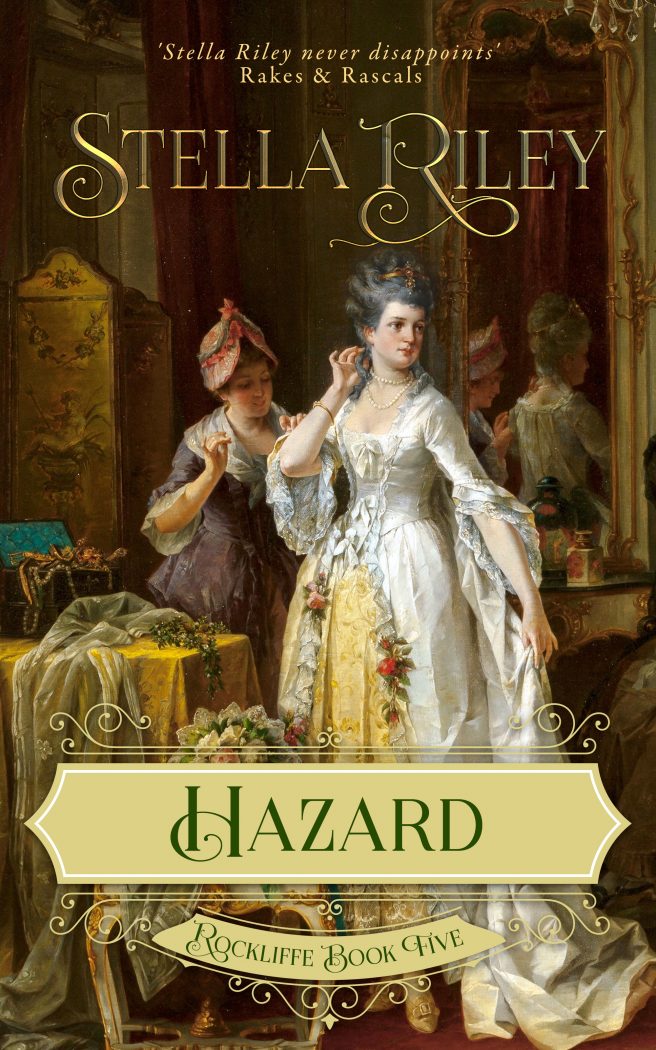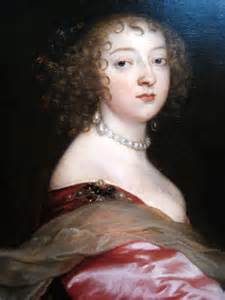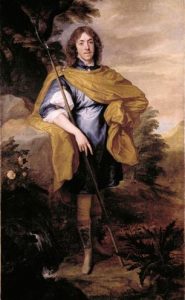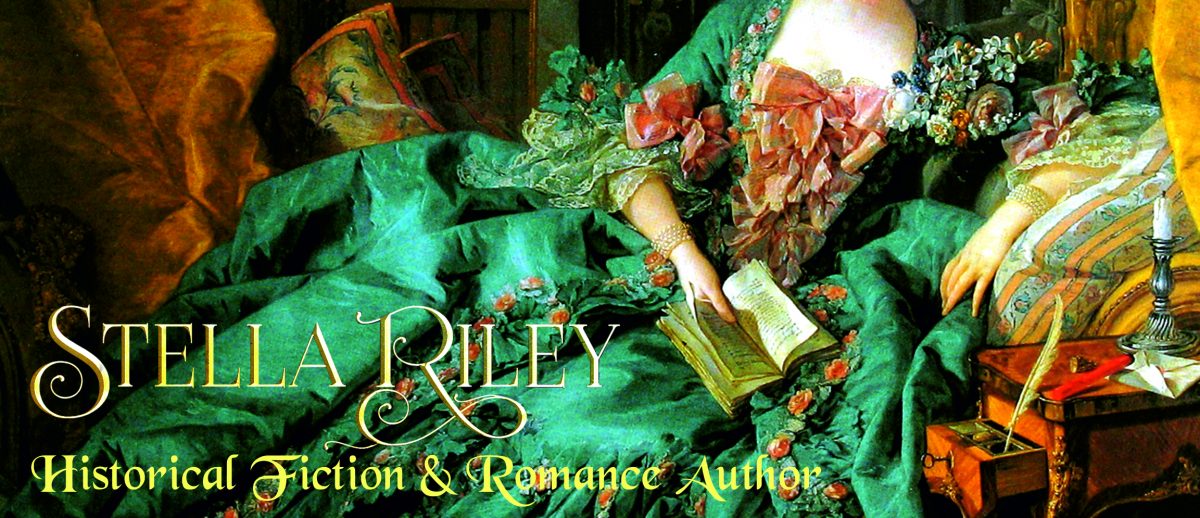Author: Stella Riley
The Trial of Charles 1 – a dramatic reconstruction!
Some months ago, I was asked to write a play.
Something suitable to be performed in Sandwich’s ancient courtroom
during both the annual Festival and Arts Week.
This, since I’ve never written a play before, was a bit scary … but here is the result.
MAN OF BLOOD OR MARTYR OF THE PEOPLE?
Every member of the cast is portraying a real person and all the language in the actual trial sequences is authentic … words spoken by the King himself and by the various officers of the court. Even my own additional scenes feature people who were really there. (For my sins, I’ll be playing the part of Anne Fairfax!) If you’ve ever wondered what really happened during those four days in January 1649, it’s in our play – warts and all, as someone who shall be nameless once said.

Our beautiful courtroom, dating from the reign of Elizabeth 1
To our amazement and delight, tickets for both August performances sold out within five days. But anyone who missed out will have the chance to catch this unique performance when we repeat it on September 17th & 18th for Sandwich Arts Week.
WENDY’S FAVOURITES – AUDIOBOOK REVIEW: THE PLAYER BY STELLA RILEY AND NARRATED BY ALEX WYNDHAM
Welcome to Adrian’s world
In HAZARD, Lord and Lady Sarre’s house-party takes us once again to my own home turf. Here are a few pictures of the Ancient Cinque Port of Sandwich – most of which have changed very little since Adrian’s time.

Let’s start by wandering down to Sandwich Bay …
Marcus would put money, if he’d had any, on Sarre having procured a license; and, if that was the case, there was almost certainly only one place he’d go. The house in that God-forsaken spot on the east Kent coast that he’d always been so bloody fond of. (Extract from The Player)
Caroline opened the curtains and found herself gazing across a narrow sand and shingle beach to miles and miles of empty grey ocean. She shut her eyes and then opened them again. If one were searching for the bleakest most deserted spot one could find, this should surely qualify.
Adrian’s guided tour – and schoolroom lesson.
‘During the reign of Edward the Confessor, Sandwich and four similar ports were grouped together to become known as the Cinque Ports.’
‘The other four being …?’
‘Dover, Hastings, Hythe and Romney,’ said Sarre. Then, ‘Who is conducting this lesson?’
‘You, my lord,’ replied Caroline severely. ‘But you shouldn’t miss things out.’
Adrian would have recognised his town in this painting. It shows the bridge over the River Stour and the Barbican; and, dominating the sky-line, St Peter’s church.
A similar view today. Adrian would have known the drawbridge built in 1757, not the more modern swing bridge we have now. But he’d recognise pretty much everything else.
‘The bridge is only about twenty years old,’ he remarked. ‘I remember it being built. Before that, one had to cross the river by ferry.’ Then, pointing to an odd building comprising two conical parts connected by an arch spanning the road, ‘The Barbican, on the other hand, pre-dates it by over two centuries. Tolls are payable there for every carriage, cart and cow wishing to use the bridge.’
Caroline strolled along, admiring a row of black-and-white half-timbered houses. She said, ‘I’ve never been anywhere like this. It’s charming.’
‘I’m glad you think so. In the sixteenth century, these houses and others like them were probably occupied by Flemish Huguenots who came here to escape religious persecution.’ He gave her a half-smile. ‘Many of them, it may interest you to know, were weavers by trade.’
The Guildhall Courtyard where Adrian and Caroline met Mr Bailes.
Sarre took in the thin coat hanging loosely on a too-thin frame and the swollen joints in the rheumatic hands. Then, turning to Caroline, he said, ‘I’m being very rude. This gentleman is Mr Bailes. He was head-gardener at Sarre Park when I was young. Mr Bailes – this is Mistress Maitland. She is a friend of mine.’
‘Honoured, Miss.’ Bailes touched his shapeless hat and looked back at the Earl with a sigh. ‘I’m glad to have seen you, m’lord – but I’ll be on my way now. It’s not right keeping the young lady standing about in the cold.’
His lordship detained him with a hand on his arm.
‘It isn’t – which is why we’ll go over to the Old New Inn so that she can sit by the fire while you tell me everything.’
Inside the church of St Peter …
With no music, no flowers and an openly disapproving vicar, the ceremony was both simple and no longer than necessary. The ring slid on to her finger, warm from his hand. She stared at it for a second, transfixed, before looking into his face to discover that he was doing the same thing, his expression oddly intent. Then the silver-grey eyes flicked back to her face and the shadows vanished in a dazzling smile.
This has changed a bit. These days, St Peter’s is no longer a functioning church – but the curfew bell, telling locals they may let their pigs and geese into the streets is still rung there every evening at 8 pm
And finally, Walmer Castle – scene of the confrontation between Adrian and Marcus.
Marcus swallowed. ‘Come to gloat, have you?’
No, you malicious ass, answered Adrian silently. I’ve come to rub your nose in the mess you’ve made of your own life and done your damnedest to make of mine. And to find out why.
Originally built as one of Henry the Eighth’s coastal defences, the castle later became the home of the Lords Warden of the Cinque Ports. In Adrian’s day the current Lord Warden was the Earl of Holderness.
I hope you’ve enjoyed this brief tour around Adrian’s town. As you may possibly have guessed, I’m proud to live here.
Katherine Stuart, Lady d’ Aubigny
 Daughter of the Earl of Suffolk, little is known of Kate’s early years or education. In May 1638 she secretly married Lord George Stuart, ninth Seigneur d’Aubigny and second son of the Duke of Lennox. Clearly, it was a love-match; less clear is why neither Kate’s parents nor the King, who was guardian to the Stuart brothers, would consent to the match. But the young pair did it anyway and had it commemorated in two sumptuous portraits by Van Dyck. The one of George (now in the National Portrait Gallery) bears the motto, ‘Love is stronger than I am’.
Daughter of the Earl of Suffolk, little is known of Kate’s early years or education. In May 1638 she secretly married Lord George Stuart, ninth Seigneur d’Aubigny and second son of the Duke of Lennox. Clearly, it was a love-match; less clear is why neither Kate’s parents nor the King, who was guardian to the Stuart brothers, would consent to the match. But the young pair did it anyway and had it commemorated in two sumptuous portraits by Van Dyck. The one of George (now in the National Portrait Gallery) bears the motto, ‘Love is stronger than I am’.
 The couple had two children. Tragically, however, George was killed at the battle of Edgehill in October 1642 leaving his young widow not just heart-broken but in financial difficulties. Since George hadn’t made a will, Kate couldn’t gain access to his money.
The couple had two children. Tragically, however, George was killed at the battle of Edgehill in October 1642 leaving his young widow not just heart-broken but in financial difficulties. Since George hadn’t made a will, Kate couldn’t gain access to his money.
In May 1643, she got Parliament’s permission to come to London to deal with her husband’s affairs. Kate used this opportunity to deliver the King’s Commission of Array (aimed at raising forces among royalist sympathizers in the city) to fellow-conspirator Edmund Waller. It’s said she frequently carried secret messages hidden in her curls! Unfortunately, the Waller Plot was betrayed and some of the obscurer figures involved in it were hanged by Parliament. Kate claimed the protection of the French ambassador, by virtue of her husband’s French title, but was none the less imprisoned in the Tower for some months.
By late 1648 Katherine had married her second husband, a Scottish gentleman of the bedchamber to the King – James Livingston, Viscount Newburgh. They did not have children.
In December 1648, only weeks before his trial and execution, Charles I spent a night at the Newburghs’ house in Surrey, on his way from the Isle of Wight to Windsor, and the couple seem to have made some attempt to secure his escape. Their plans were foiled by the precautions of Major-General Thomas Harrison, but they were able to pass messages from Charles to his exiled queen.
Following the regicide the Newburghs joined other royalist exiles at The Hague. Kate died there in 1650 and was survived by her husband, who was created Earl of Newburgh in 1660 on the Restoration.
WENDY’S FAVOURITES – AUDIOBOOK REVIEW: LES MÉSALLIANCE BY STELLA RILEY AND NARRATED BY ALEX WYNDHAM
(Rockliffe, #2) Genre: Historical Romance (Georgian – 1767 and 1775) Cover Blurb: The Duke of Rockliffe is 36 years old, head of his house, and responsible for his young sister, Nell. He is, theref…
Source: WENDY’S FAVOURITES – AUDIOBOOK REVIEW: LES MÉSALLIANCE BY STELLA RILEY AND NARRATED BY ALEX WYNDHAM
Audiobook Review- The Parfit Knight by Stella Riley
Audiobook Review- The Parfit Knight by Stella Riley
REVIEW – THE PARFIT KNIGHT BY STELLA RILEY
Corneille and the Théâtre du Marais
Pierre Corneille
1606-1684
On a bright but chilly December morning in Rouen, the Corneille Museum was a warm and welcome surprise … and my husband and I had it to ourselves.
The museum is situated in the house that was Corneille’s home for over fifty years. A pleasant, welcoming building with two large, light rooms on each floor which, in additional to relevant theatrical memorabilia, also contain Corneille’s extensive library and his desk.
I should probably admit that I’m not actually a great fan of Corneille’s plays and much prefer those of Moliere.
But I wanted to use French theatre as a background to The King’s Falcon which is largely set in 1652 – and at that time, Moliere’s troupe was still touring the provinces. Corneille, on the other hand – though his popularity had taken a bit of a hit in the late 1640s – was still the foremost French dramatist of his day.
He wrote some forty-two plays during his lifetime, many of which have been largely forgotten and only four are ever performed in any language other than French.
Horace (1640), Cinna (1641), Polyeucte (1642/3) … and the one for which Corneille is best known and which began his rise to theatrical stardom … Le Cid.
Le Cid was premiered at the Théâtre du Marais in 1637. This had been founded only three years before by two actors (Lenoir and Montdory) who felt it was time to end the theatrical stranglehold of the King’s Players at the Hotel de Bourgogne … and it immediately gained the patronage of Cardinal Richelieu. The theatre, which had begun life as a tennis-court, suffered a damaging fire in 1643 which resulted in some re-building – and the installation of the first proscenium stage.
Richelieu had been Corneille’s patron as well as that of the Marais Theatre until the opening performance of Le Cid. The play was an instant success but it was also controversial in that it departed from the existing form and style. Richelieu didn’t like it; Corneille refused to accept the Cardinal’s criticisms and thus a parting of the ways became inevitable. Richelieu, being a fan of Montdory, continued to support the Marais until his own death in 1642 … but Corneille now took his new plays to the Hotel de Bourgogne.
And then, in 1652, something occasioned a change of heart. Perhaps because his recent offerings had been less than successful or perhaps because of some disagreement at the Bourgogne, Corneille gave permission for a revival of Le Cid on the stage of the Marais Theatre where it had premiered some fifteen years before. Readers of The King’s Falcon will recall that Athenais de Galzain took the leading role of Chimene … her first opportunity to play Corneille and an occasion of equal delight and terror.
 This portrait is fitted above the fireplace in Corneille’s study. The sun strikes it from windows to the right.
This portrait is fitted above the fireplace in Corneille’s study. The sun strikes it from windows to the right.
Like myself, many of you will have seen the epic film, El Cid, starring Charlton Heston and Sophia Loren. It’s the tale of an 11th century Spanish warrior – which, naturally, was one of the things Richelieu had against it.
Perhaps, also like me, some of you will remember the final scenes when Rodrigue’s corpse is strapped into the saddle of his horse to put heart into the army for their next battle … and the epic closing line given in voice-over.
And so El Cid rode off the pages of history and into legend.
I can’t help wondering what Corneille would have made of that!














